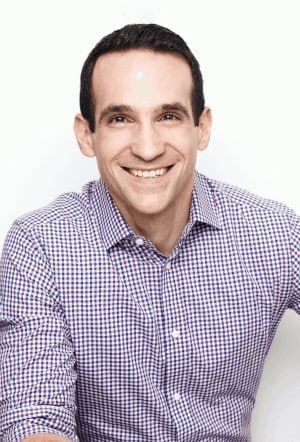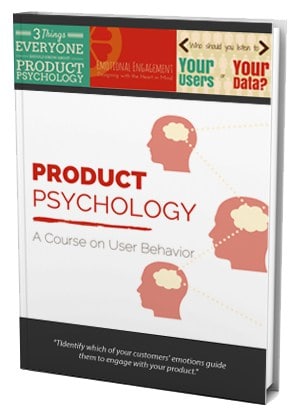Nir’s Note: Susan Weinschenk is a behavioral scientist, author, and speaker at the upcoming Habit Summit in April. (You can register here!) In this interview, she chats with Max Ogles about some of the overlooked principles of behavioral design.
Q: You’re the author of the book, One Hundred Things Every Designer Should Know About People. What’s the one takeaway from the book readers get most excited about?
Susan Weinschenk: One thing that often surprises people is the important role of peripheral vision.
We’ve all been trained to pay attention to design in terms of what people are looking at, with the idea that the central part of the screen is the most important real estate. For many years, when I would teach in workshops, we would talk about primary real estate on the screen and how to use that. And that’s all in central vision. So I think that people haven’t understood, necessarily, how important our peripheral vision is.
Q: And what, specifically, is important to understand about peripheral vision?
SW: We take in information in our peripheral vision. We take it in mostly unconsciously; we react to emotional images or messages and danger in our peripheral vision and our peripheral vision is actually deciding where we should look next. And that’s all happening unconsciously and we just don’t realize it.
When product people realized that, they can go back and ask, “Wait a minute, what do we have on our screens in peripheral vision?” People often want to think about that and apply that right away because it’s pretty basic.
Q: In your consulting practice, you help companies conduct behavioral design audits. What are some of the most common deficiencies that you discover?
SW: Whenever you are designing something you want people to do a particular thing like press that button there, or sign-up, or make the purchase, or whatever you’re designing for. But there’s so much going on in a project. One of the things people miss is they lose sight of the “micro moment.”
I’ll say, “Okay guys, the person, they’re on this page, exactly what is it you want them to do here, and have you done everything you can to make sure that thing happens?” There’s a tendency that that micro moment gets lost.
Q: How do you find these”micro moments”?
SW: I point out to people what the micro moment idea is from their target user’s point of view. Just seeing it from the point of view of the user.
When you work on a project for a long time is you don’t see it the same way like someone else when they see it for the first time. You know where that information is located on the screen, you know what that item on the menu means. You know that in order to fill out the form you need to do this, this, this and this. It’s very easy to forget what it’s like to be new to it.
Q: At Habit Summit 2017, you’re conducting a workshop on “designing for action.” What are some of the basic principles of designing for action?
SW: First of all, you need to know and need to make sure you really understand your target audience—like who are they, what’s the context that they’re in, are they under stress, do they have a sick child next to them crying and they’re trying to find a doctor? I mean what’s the situation in which they’re using this thing? You need to know what is likely to motivate them in this situation.
Q: Okay so first, understand the target audience—then what?
SW: We teach some of the major drivers in behavior. So which of those are most operative here at this moment in time, with this user, in this context, what’s gonna be the thing that propels them to take action? Is it because there is something instinctual like fear or danger? Is it because they have the desire to belong to a part of a group, so is it a social motivator? Is it something to do with a reward, to know what is going to work for that part of the audience in that situation?
Then be really clear about what exactly is the action you want them to take, back to the idea of a micro moment. There are a number of different strategies to apply from the workshops that we teach. It’s actually pretty scientific and linear. To me it’s not art, it’s definitely science.
This interview has been edited for length and clarity. See Susan Weinschenk and many other behavioral design experts at the upcoming Habit Summit! Get your ticket at HabitSummit.com
Related Articles
- Schedule Maker: a Google Sheet to Plan Your Week
- Cancel the New York Times? Good Luck Battling “Dark Patterns”
- How to Start a Career in Behavioral Design
- A Free Course on User Behavior
- User Investment: Make Your Users Do the Work
- Variable Rewards: Want To Hook Users? Drive Them Crazy
- The Hooked Model: How to Manufacture Desire in 4 Steps



